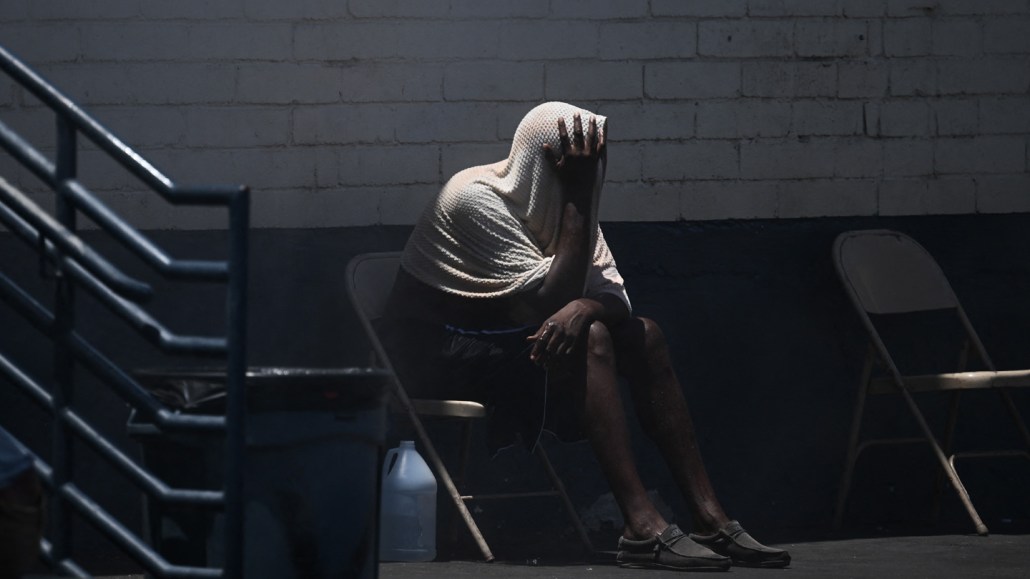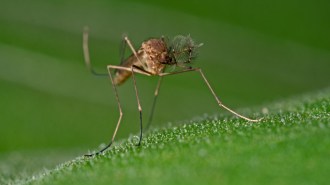Extreme heat taxes the body in many ways. Here’s how
Hotter nights and more humid heat waves are pushing the limits of the human body

Extreme heat waves are pushing the human body to the limit. Without ways to cool down, the high temperatures can prove harmful or even fatal. Here, a person attempts to stay cool during a record-breaking heat wave in Phoenix on July 18.
Patrick T. Fallon/AFP/Getty Images Plus
- More than 2 years ago
July 2023 was the hottest month ever recorded. It could even be the hottest month in human history.
And it’s just one in a chain of broken heat records (SN: 7/13/23). A record-breaking heat wave is still lingering in the U.S. Southwest. In 2020, temperatures jumped to 38° Celsius in Siberia, marking the highest ever recorded in the Arctic Circle (SN: 7/01/20). Nine of the 10 hottest years on record have taken place in the last decade.
That heat has tested the limits of our very bodies to tragic effect: In 2003, an estimated 70,000 people died from a European heat wave. In 2022, another heat wave there caused some 62,000 deaths. Thousands more have died in other extreme heat events, and even more have suffered heat illness or injury.
The human body can adapt to heat, but only to a certain point, research has shown (SN: 7/27/22).
“The body works quite hard to keep the core body temperature within a pretty narrow range,” says Kristie Ebi, who researches climate change and health at the University of Washington in Seattle. “If you can’t cool down that core body temperature, then your cells and your organs start being affected.”
Sustained heat waves place our bodies under strain, which can set off a cascade of effects that can lead to permanent injury or death, Ebi and colleagues wrote in a 2021 review in the Lancet. Heat waves are also getting more humid, limiting our ability to cool down, and nights are growing hotter, cutting into the time we might rest and recover. Both these trends undercut our ability to adapt to rising heat.
While people have ways to keep themselves and their communities safe, heat risks will only increase with rising temperatures, researchers say. Here’s what extreme heat and high humidity do to the body — and how you can protect yourself.
Humid heat waves, hot nights
The body has two main pathways to keep cool. First is sweating. As body temperature rises, sweat glands in the skin release salty water out of pores. That water absorbs heat as it evaporates, cooling you off.
At the same time, the body redirects blood toward the skin surface by dilating blood vessels just under the skin and pumping the heart harder, which is why many people look flush when they’re hot. This allows the blood to better disperse the heat to the surrounding air.
Within a certain range, these systems work in concert to keep your internal body temperature within a safe window, usually around 37° Celsius. Unfortunately, Earth isn’t just getting hotter; it’s getting hotter in ways that are harder for our bodies to handle.
Climate change is spurring heat waves that are not only hotter and longer but, crucially, more humid (SN: 7/19/23). “It’s becoming more dangerous because the humidity is acting as a barrier to how we cool ourselves,” says Rachel Cottle, who researches thermoregulation at Penn State. Since humid air is full of water, sweat doesn’t evaporate like it would in drier climates. So instead of cooling us off, the sweat sticks to the skin, and the heart must work even harder to compensate by pushing blood away from our core.
Even nights aren’t offering much of a break. Usually, nighttime is much cooler than daytime, which allows the body to shed heat at night. But global nighttime temperatures are rising faster than daytime ones. And as nights get warmer, the heart must work harder.
Hotter nights also cut into our sleep, says Kelton Minor, a data scientist at Columbia University who studies climate risks. “Across seasons, demographics and different climate contexts, warmer outside temperatures consistently erode sleep.”
In a 2022 study of global sleep behaviors, Minor and his colleagues found that on random, hot nights “individuals slept less, took longer to fall asleep and woke up earlier” compared with cooler nights, he says. Other research has linked poor sleep to decreased cardiovascular health and increases in the risk of injury, anxiety, depression or even gun violence and suicide, Minor says.
The dangers of high heat
The combined forces of increased heat, higher humidity and hotter nights tax the systems that cool our bodies. And when it stays too hot for too long, things can start to go haywire.
Pushing that blood toward the skin forces the heart to work harder while simultaneously reducing the supply of oxygen-rich blood to the heart. Over several hours, this can lead to oxygen shortages in the heart and, eventually, heart failure.
This intense strain helps explain why cardiovascular failure is responsible for around half of the deaths among older people during heat waves, Ebi says. The other half happens when other organs, especially the lungs, fail under the stress of handling the heat, in part from lack of oxygen. Usually, these risks pop up in people with preexisting conditions such as diabetes or chronic obstructive pulmonary disease.
These risks are especially high if the body can’t keep its temperature stable. In that case, the body’s core temperature begins to crawl upward to dangerous levels. When a person’s internal temperature reaches around 38° C, they can experience heat exhaustion, which can lead to faintness, headache, dizziness and heavy sweating.
Left unchecked, heat exhaustion can progress to heat stroke. Here, body temperature pushes past 40° C. The heat can kill cells and interfere with organ function. Symptoms include skin that is hot and dry, delirium and even seizures. Without immediate intervention, heat stroke can lead to organ failure, permanent injury and death.
Even sweating can have its risks. If you don’t drink enough water while sweating, your body begins to get dehydrated. Dehydration can thicken the blood, putting even more strain on the heart. It also puts pressure on the kidneys, which need water to filter out toxins and waste from the body. In cases of chronic dehydration, as with some outdoor workers, it can lead to kidney disease.
Even in cases that aren’t fatal, some research suggests heat-related injury can lead to years of increased risk of heat injury or death.
While these symptoms and their outcomes may seem dire, “these mechanisms play out over hours,” Ebi says. “It’s not instantaneous.” People often begin to feel symptoms well before they end up in an emergency, she says. Mortality doesn’t start peaking until around 24 hours after a heat wave starts.
This means that, often, there’s time to act and help prevent the worst outcomes.
How to stay safe
“Almost every heat-related death is preventable,” Ebi says. “People shouldn’t be dying from heat waves.” Preventing those deaths takes a mix of personal and societal actions to keep those who are most vulnerable safe.
Individuals should stay well hydrated in high heat. They should also turn on air conditioning if it’s available or, if possible, find a cooling center or public location with air conditioning. Cottle also recommends staying inside and avoiding vigorous activity during the hottest hours of the day. Putting a cool towel on your neck, using fans in humid heat or dipping your hands or feet in a cold-water bath can also help you keep cool, she says.
These tips may have particular relevance to those most at risk, either because they are less able to cool down or more susceptible to injury if they overheat. This includes adults over 65, newborns, pregnant people, individuals on certain medications and people with heart and lung conditions.
Some may also be put at increased risk due to their location or occupation. People who are unhoused and outdoor laborers may not have the option to go inside during the hottest part of the day. Poor urban neighborhoods, which tend to have many dark surfaces and relatively few trees, tend to be hotter, including at night, putting the people who live there at increased risk (SN: 4/3/18). And globally, people living in warmer, humid climates, such as Southeast Asia, are at higher risk than those living elsewhere.
To help alleviate these risks, there are a few steps that local governments can take, such as implementing early warning systems that notify residents of upcoming heat waves, Ebi says. Or officials can require roofs that naturally cool buildings. White or light-colored paint, for example, reflects heat, while “green roofs” with plants on top can cool off buildings as they evaporate water into the air. Cooling infrastructure like trees throughout a city and air conditioning run by clean power to avoid contributing to greenhouse gas emissions would also help, Minor adds.
Some of these suggestions are starting to become reality. In the United States, cities such as Los Angeles, Denver and Washington, D.C., now require some new buildings to have light-colored or green roofs.
Additionally, Ebi says, the world must reduce greenhouse gas emissions to help limit the climate extremes that can be most fatal. “Heat is an all-of-society issue,” she says, “and needs an all-of-society approach to protect the most vulnerable to make sure that people have access to the services they need.”






